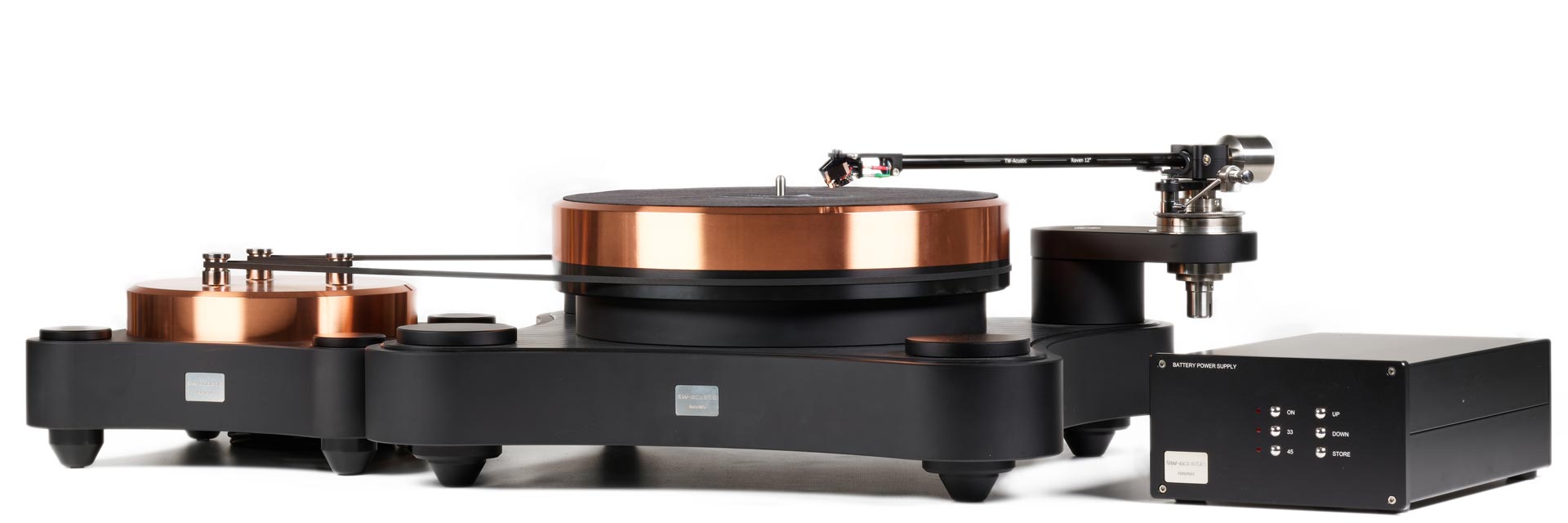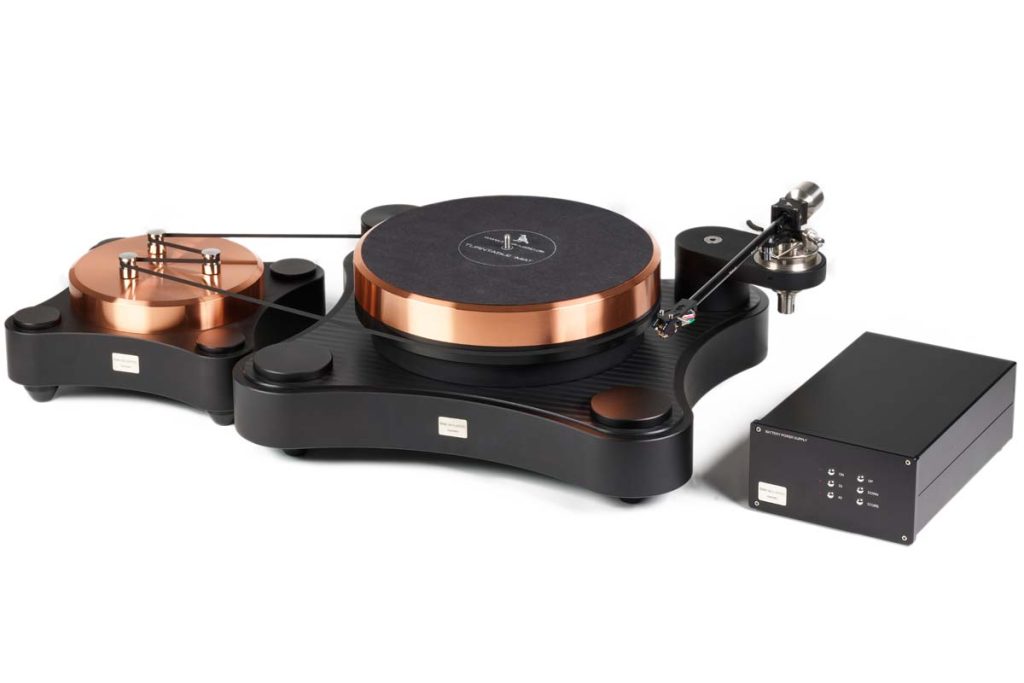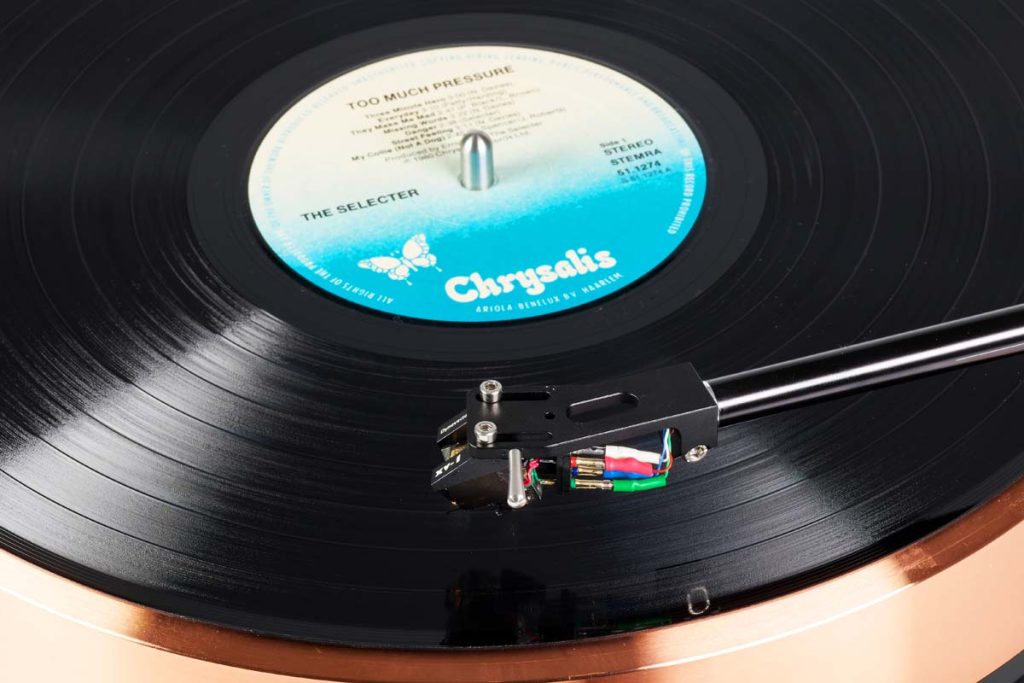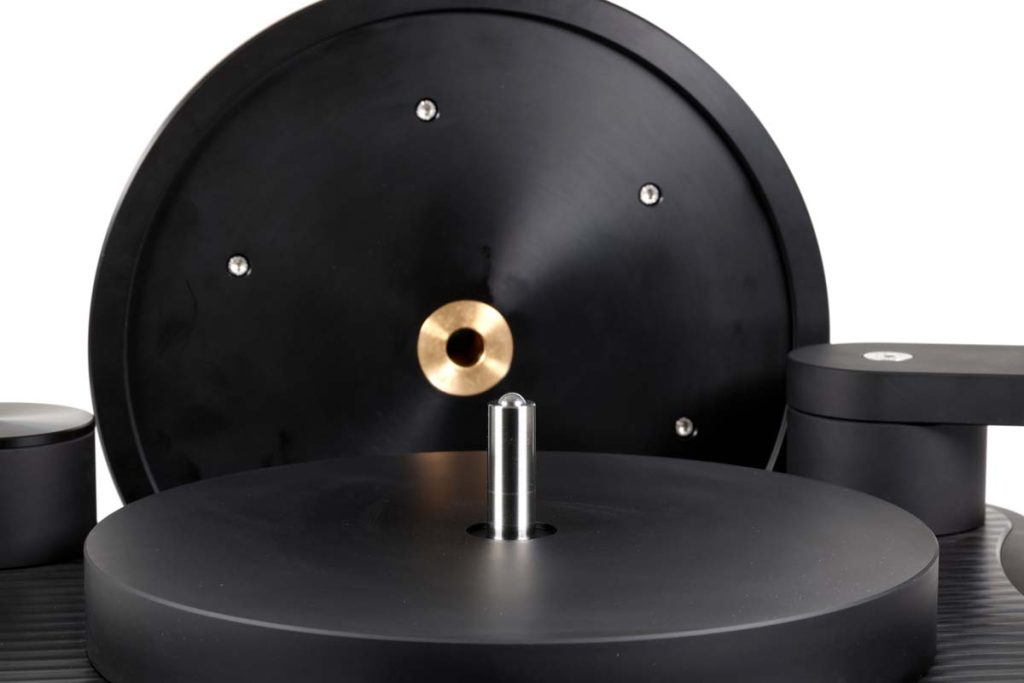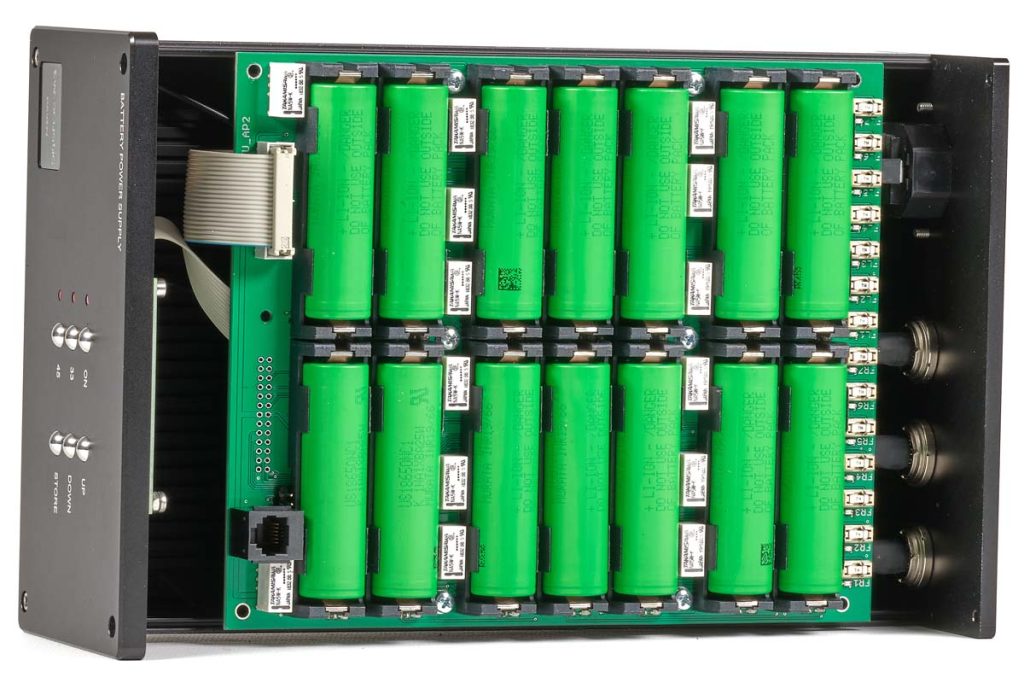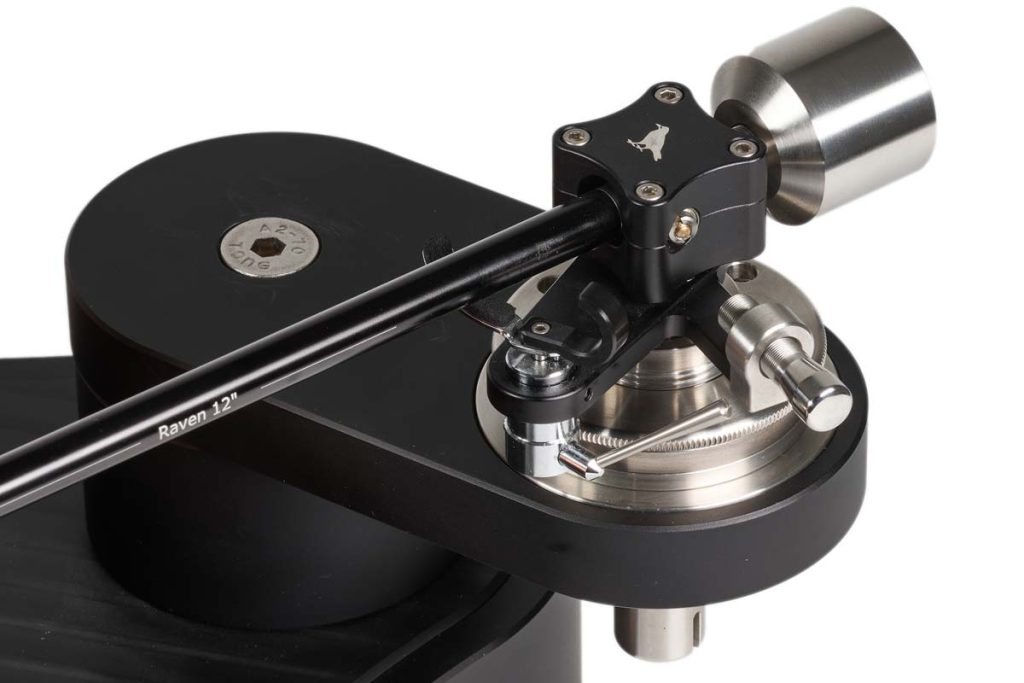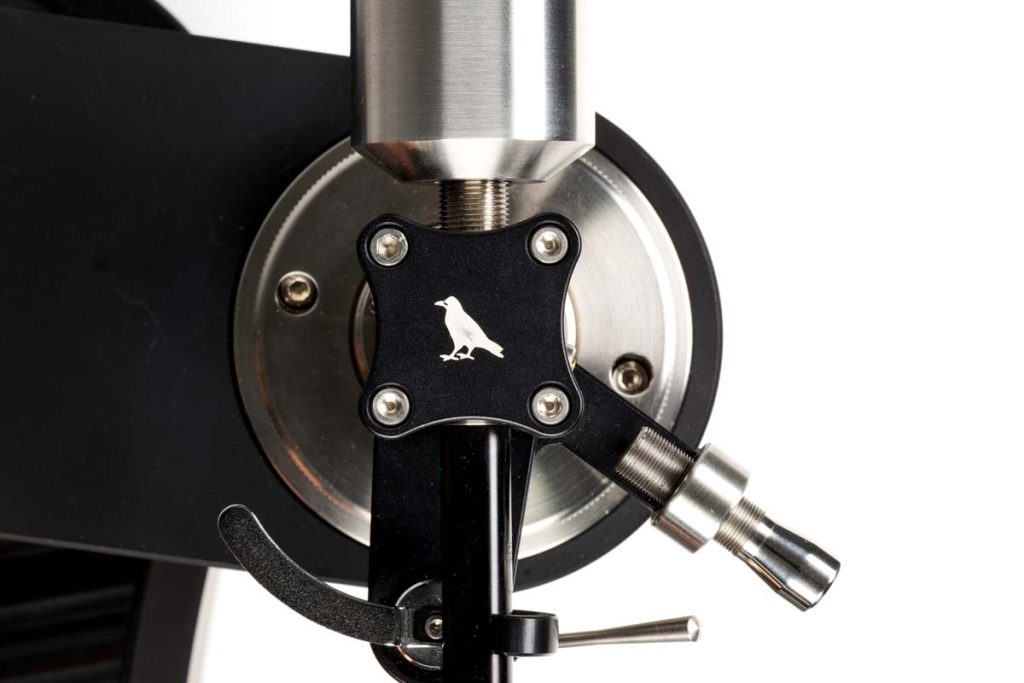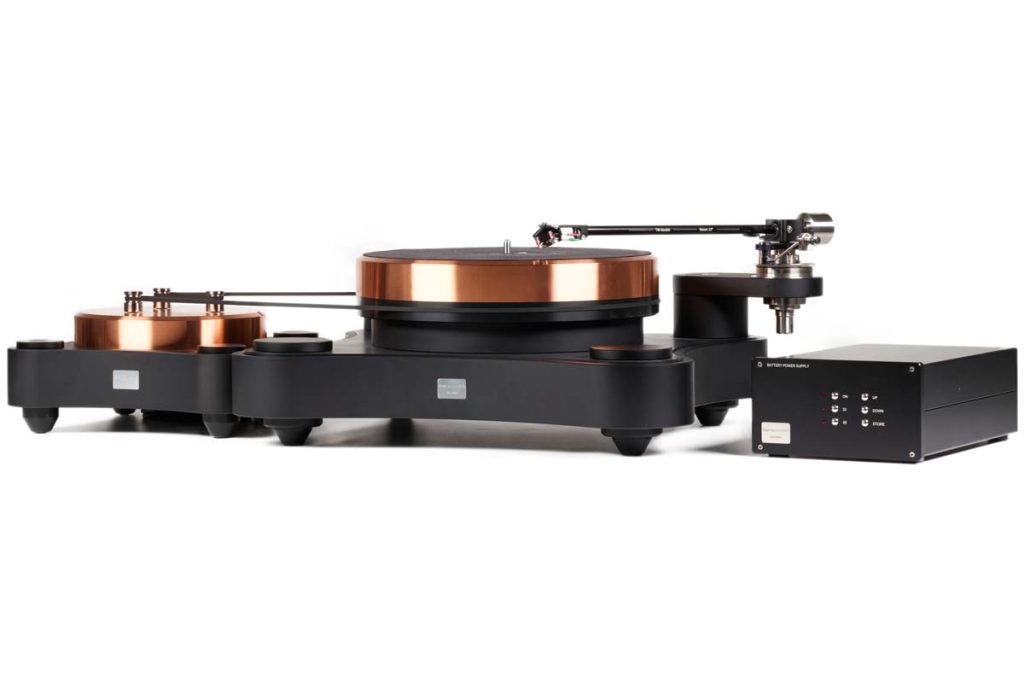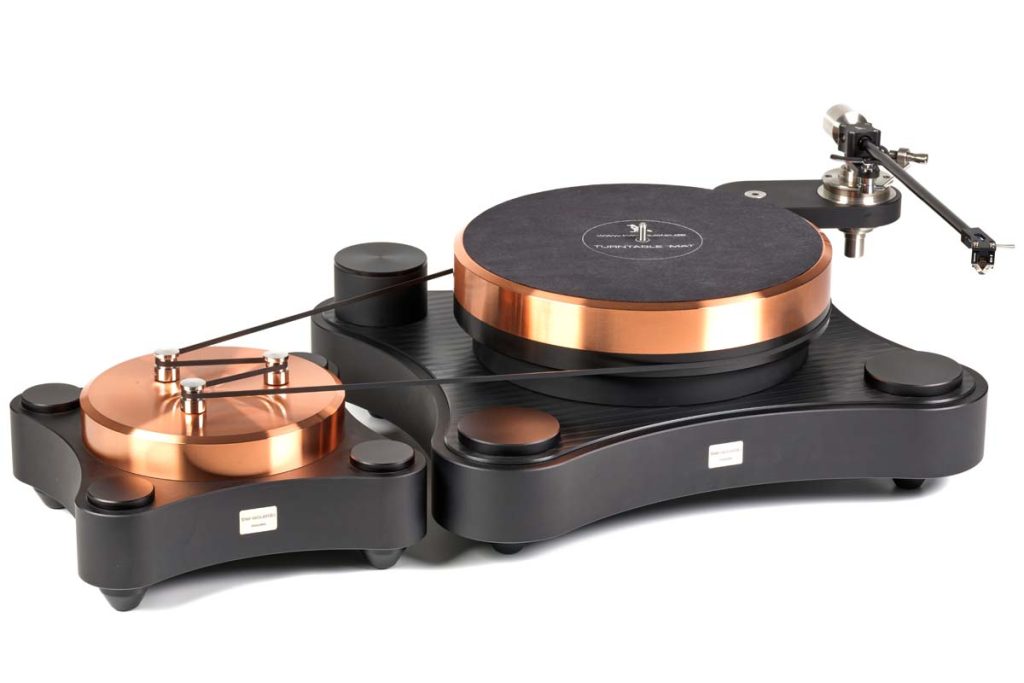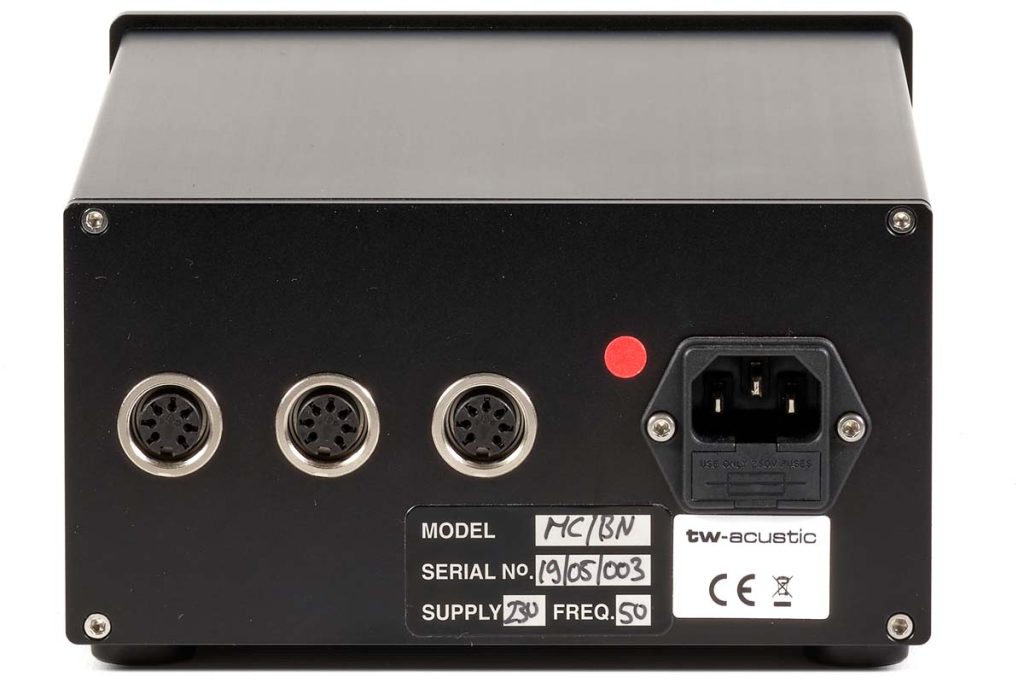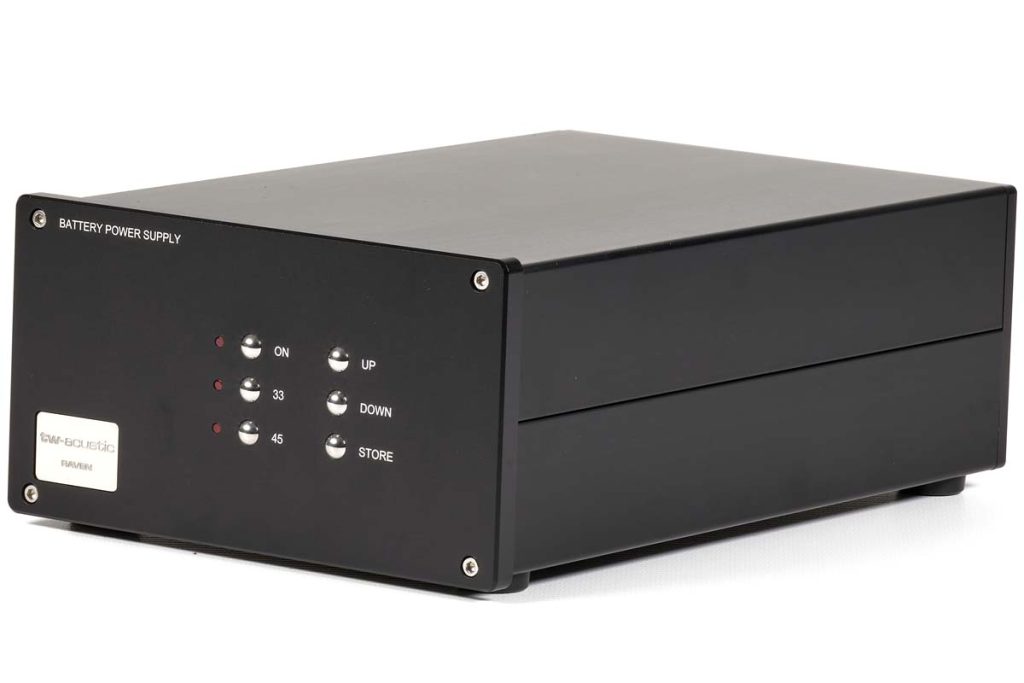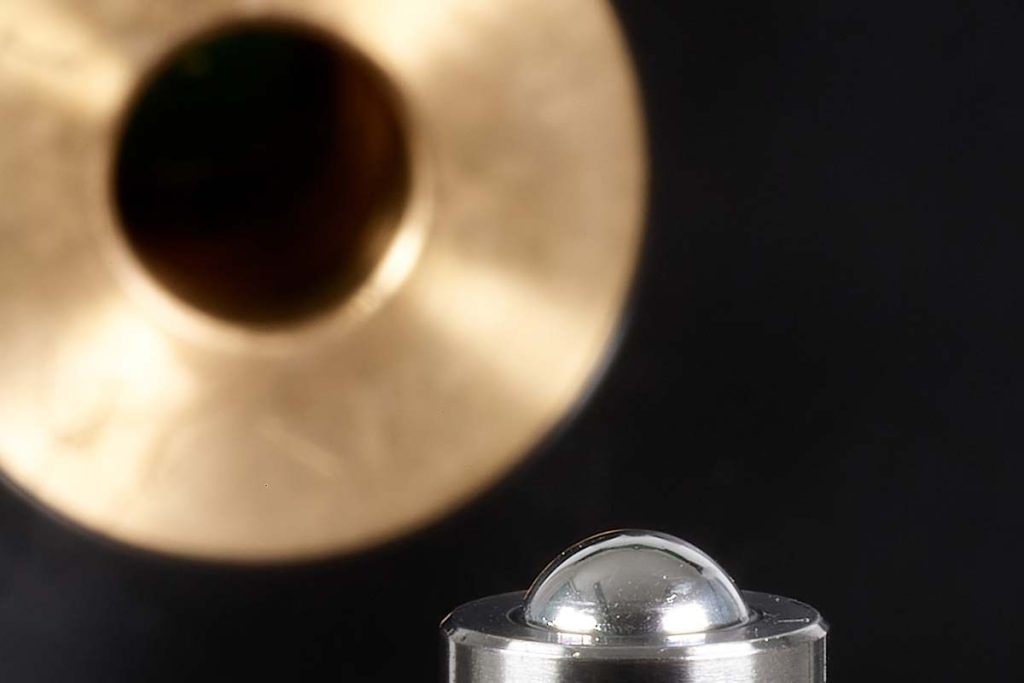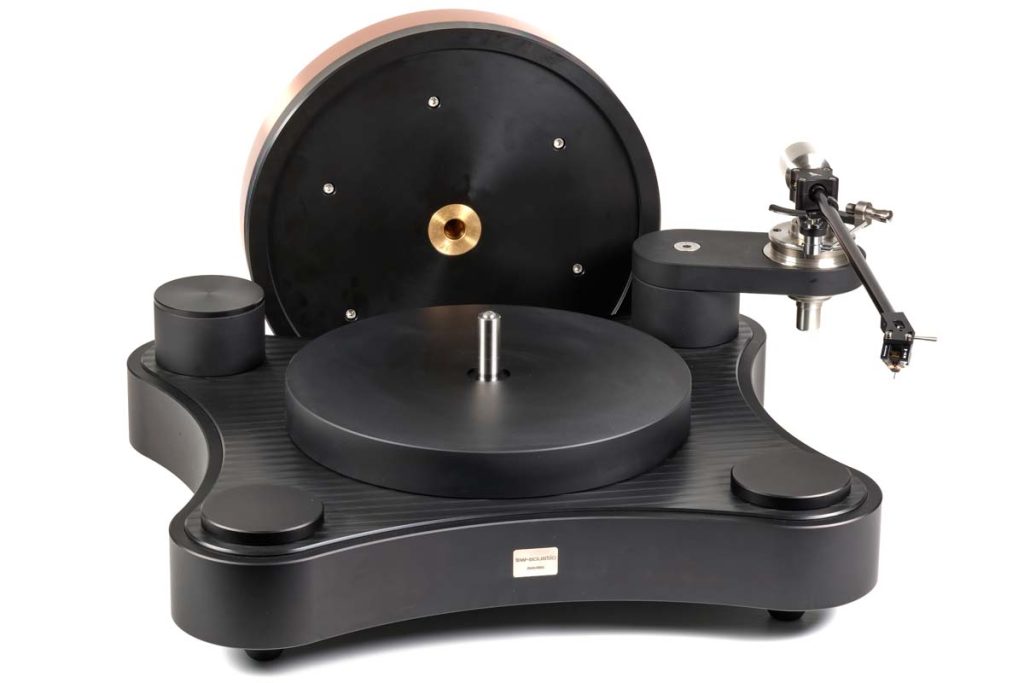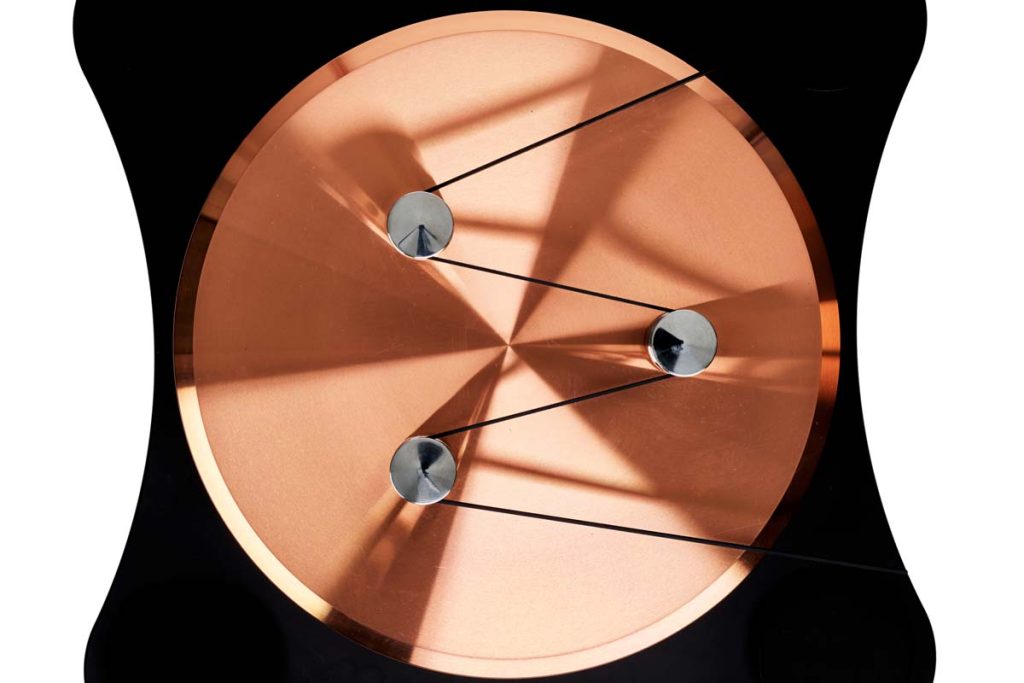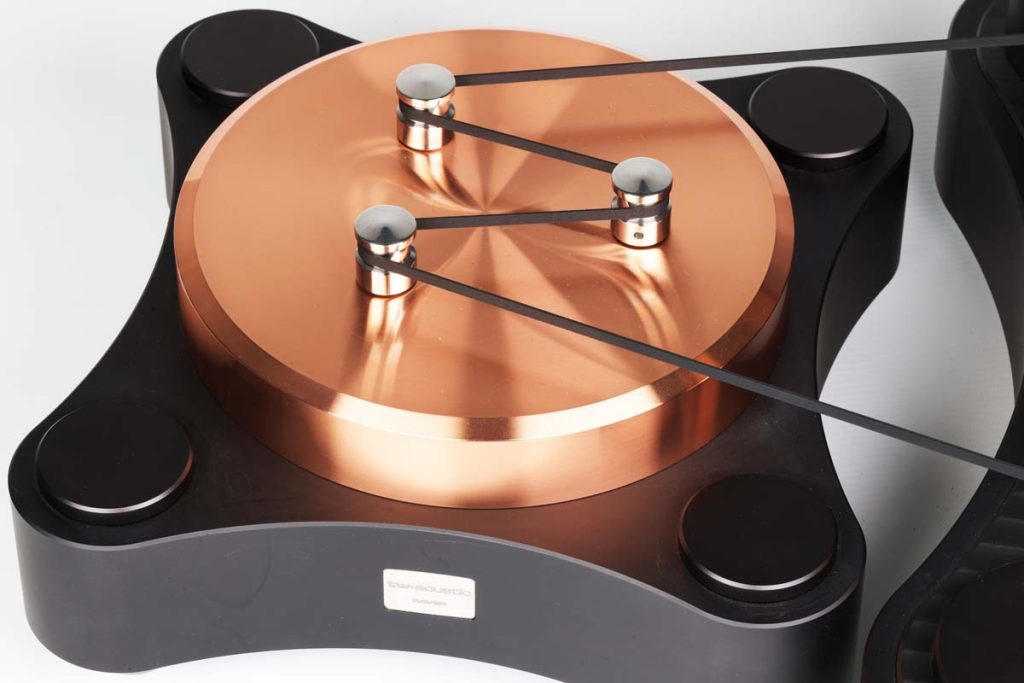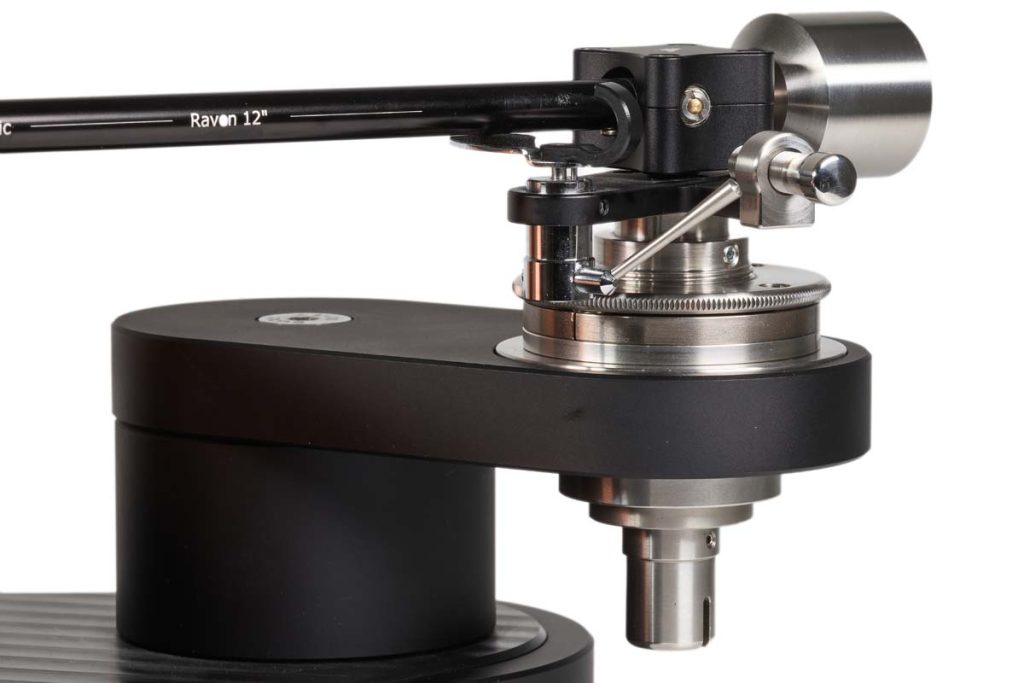TW Acustic Raven Black Night
The raven is the largest member of its genus and has been revered as a bird of the gods by some cultures. Let’s find out if TW Acustic family’s primus Raven Black Night is also worthy of worship.
I am generally curious about every new test sample. However, I cannot hide the fact that I was gripped by particularly intense curiosity with the TW Acustic Raven Black Night. Since I’ve been the proud owner of the smallest Raven GT2 model for a year now, whose qualities constantly inspire me, I was curious to see to what extent they could still be surpassed. After all, the Black Night weighs twice as much as its little brother (70 kilos, now that’s what I call a veritable running-mass!) and costs about 3.7 times as much.
Thomas Woschnik has been developing turntables in his manufactory for two decades. Twelve years ago, he added tonearms to the range. I got to know the tireless tinkerer through an awkwardness. During the installation of my Raven GT2, a mishap came to pass, as a result of which a green cable end dangled plugless from the tonearm tube – quelle catastrophe! I quickly discarded the thought to reach for the soldering iron myself and instead devoted myself all the more intensely to my bad mood. The next day I called Woschnik, who showed understanding towards my misery. Barely two and a half hours after a visit to his workshop, the turntable, ready to play, was back in my rack.
Woschnik answered technical background questions about his developments thoughtfully and with engineering pragmatism. I had the feeling that passionate enjoyment of music serves him as a motivating basis in his search for the best possible sound. To my mind, this impression is reflected in his turntables and tonearms.
After an extremely uncooperative shipping agent placed the 90-kilogram pallet at my front door, I managed to heave the not very large but all the heavier boxes up the stairs with the help of a hand truck. The chassis alone, which consists of a solid aluminum base with a precision-fit POM inlet, weighs 30 kilograms. The specially manufactured polyoxymethylene is enriched with copper dust, among other things, to optimize the acoustic properties. The surface has a discreetly striped structure, which takes away the monolithic massiveness of the drive. I used an Allen key to screw the 16-millimeter diameter platter axle, which has a stainless steel bearing ball pressed into it, to the chassis. The chassis rests on four cone-shaped, height-adjustable feet with flattened, surface-friendly contact surfaces. Inside, they hold two balls connected by a steel spring, which decouple the drive from the footprint. This facilitates leveling by compensating for any remaining unevenness. This worked excellently, and in no time at all the turntable’s foundation was perfectly aligned next to its little brother on the rack. The impressive turntable, weighing approximately 20 kilograms, consists of two elements made of copper and POM that are screwed and glued into each other. Like all TW Acustic turntables, the high-precision bronze axle bearing has a bearing mirror made of particularly hard plastic.
After applying three drops of the supplied oil to the bearing ball, I was able to put the platter on. Despite advice from sales manager Jan Sieveking to perform this somewhat delicate operation in pairs, I succeeded with the help of a laser liner that marked the vertical of the platter axis in one dimension. The 10-kilogram drive unit contains three powerful motors, which Woschnik modified to run absolutely smoothly. The motor block consists of an aluminum base element with a copper cover. The unit must also be meticulously aligned on the height-adjustable conical feet so that the drive belt, which is rough-ground on the inside, runs centrally over the three pulleys, which are precisely ground to fit the respective motor. Using the laser liner, this time with horizontal alignment, I succeeded on the first try. The three cables leading out at the bottom are connected to the “Battery Power Supply” via screwable connectors. The plain but extremely solid case contains two independent lithium-ion battery banks and the motor control unit. Six spring-loaded metal buttons and LEDs are embedded in the front, which can be used to turn on the drive as well as switch and fine-tune the speed. I, a self-confessed touchscreen hater, was already impressed by the buttons with a clear pressure point on my drive.
Thanks to a battery-based supply, the electronics are completely independent of interference from the power grid. Even more important is the low internal resistance, which, according to Woschnik, motors particularly like. The practical implementation is just one example of his well thought-out designs in every respect. For example, one battery bank is responsible for operating the drive, while the other is charged at the same time. When needed, the system automatically switches to the charged bank. This also happens when the unit is switched off, so that the turntable can be used immediately after long breaks in operation. If the batteries are weakening, this is indicated by flashing LEDs; defective batteries are also indicated by LEDs. The fact that these are conventional storage cells used in e-cigarettes, for example, increases availability and makes replacement easier.
The motor control developed by Woschnik has to intervene less due to the tripple drive, and this, according to the engineer, in conjunction with the high moment of inertia of the platter, causes the enormous smoothness. The sound characteristics can be discreetly influenced by the variable distance of the motor block to the drive and the associated change in belt tension. I liked the very direct, grippy sound with a fairly tight drive belt best.
On all four bulging corner areas of the chassis are 80 millimeter diameter tonearm bases, all of which can be used if necessary. The outriggers, which are made of 20-millimeter-thick aluminum, allow tonearms of all common lengths to be mounted. If you use the in-house tonearms, a plastic cap with a spike and a matching hole in the headshell make precise mounting a breeze. The tonearm, a 12-inch version on the Raven Black Night, is designed with the same stringency as the turntable. The tonearm tube, made of anodized aluminum, carries an elegantly filigree headshell with adjustable azimuth at the front. Three different weights are supplied, with which the contact force of all common cartridges can be sensitively adjusted via a thread. The tonearm is mounted on a gimbal. The rigorously selected precision ball bearings are precisely mounted. For this reason, even the most curious should keep their hands or the Allen wrench well clear!
The anti-skating force is generated magnetically and is also adjustable via a fine thread. The tone arm height can also be changed via a knurled wheel even during operation, or as they say, “on the fly”. This is done very smoothly and comfortably. I consider it a particular highlight of the tonearm design.
Although no instruction manual was included with the test sample, I managed to set it up without any problems thanks to the well thought-out design. Even for less experienced users, this should not be a problem, as full service from the dealer should be a given for a turntable of this class.
But before I could listen to “my” Raven, I first had to digest a small disaster: To my disappointment, I found that the pre-assembled Dynavector DRT XV-1s recommended by Sieveking had not survived the transport. The bulky protective cap had slipped off in transit, sending the delicate needle carrier into nirvana. Fortunately, Woschnik sent me the prototype of a pickup mounting aid for his tone arms. This extremely practical part allowed me to swiftly change the pickups according to my gusto. It will be included with the tonearms in the future, but will also be available separately.
Since now the smallest and largest of the raven family were united side by side on my Rack, a comparison virtually forced itself. At unchanged periphery the following variables were available: TW 12″, TW 10.5″ tonearms, Excalibur Platinum, Clearaudio Talisman and Jubilee MC pickups, Cardas Cygnus and Clear Beyond phono cables, and TW Acustic and Sonic Voice disc mats. I list this so meticulously because each change caused an easily audible, more or less pronounced change in sound. To describe this in detail is beyond the scope of this article; the conversion work alone was immense. It was only because of the clever design of the turners and their extensive compatibility that I got involved in this.
However, the summary of this marathon, which I had suspected and in some ways feared, can be summed up in concise words: The TW Acustic Raven Black Night is once again clearly better in all audiophile categories, and not only that, the fun factor rises right up to the ceiling!
The following music examples refer to the best equipment in this context in terms of sound with the 12-inch tonearm, Cardas Clear Beyond, TW plate mat and Jubilee MC.
Since live recordings are good for judging, Van Morrison landed on the plate first: It’s Too Late To Stop Now, recorded in 1973 in Los Angeles and London. Produced without overdubs, this disc demands quite a bit from the playback chain due to the band’s lush lineup and the live dynamics captured. On mediocre equipment, the album sounds flat, and from the diffuse, midrange-emphasized mishmash of sound, Van Morrison’s incisive organ can then only be perceived as tortured and squeezed. Black Night leaves no doubt from the beginning that this is not due to the recording. Even before the first applause, the smallest background noises give a sense of the expanse of the concert hall, perhaps an indication of a particularly “black background”. The instruments are staggered freely on the virtual stage in all dimensions in a differentiable way.
The entire sound event is reproduced organically, naturally, opulently with a lot of tension. The tonal characteristics of the instruments are reproduced clearly and cleanly, setting them apart from the other sound events. Even the electric bass, relatively freed from harmonics, remains audible even in unclear loud passages. The cymbals sound freed from any coarseness and yet dynamically assertive. It sounds as if the bassist had put on new strings, the drummer had tightened the drum heads and the cymbals had been freshly polished. Exceptionally well, these qualities can be traced on Soweto by DollarBrand/Abdullah Ibrahim. I am completely caught by the impressive beauty of this music carried by South African rhythms, at the same time I can follow every single instrument without any effort.
In my opinion, the drive allows the pickup to follow the finest as well as the coarsest dynamic gradations and not slow down its detail selection. I felt that the frequency band was extended in both the lows and the highs. When I moved on to simply listening to music after the test phase was over, another characteristic of the turntable emerged that cannot be rated highly enough: The sound image gained spatiality even with less well-produced discs, better detached from the speakers, and filled the listening room with presence and driving drive in full-fat!
The Black Night has the ability to deliver the highest resolution without falling into ascetically sparse nitpicking. Thus, Lou Reed stood in the middle of the listening room, the bass growled deeply and comfortably behind it. In the background chorus on “Walk On The Wild Side,” pulled into the speaker plane by the slowly receding reverb effect, I could now distinguish the individual voices. I have never heard Elvis Costello’s “Shipbuilding” so moving, and at the latest when Chet Baker starts his trumpet solo, there is a danger of goose bumps. Of course, the qualities of the drive become immediately apparent, especially with classical music. An acoustic excursion to Mussorgsky-Ravel: The recording of Pictures at an Exhibition with the Berlin Philharmonic under Herbert von Karajan left me overwhelmed and happy. I could find no points of criticism in either the turntable or the tonearm.
Thomas Woschnik has created the definitive turntable with the TW Acustic Raven Black Night. Built for eternity with a timeless design developed from functionality, exceptionally practical and acoustically superior. The sound can be determined by the choice of the pickup, the drive keeps itself tonally out of the action, offers a base for the best.
Accompanying Equipment
Sources: TW Acustic Raven GT2 with Raven 10.5″ tonearm, Excalibur Platinum, Clearaudio Talisman V2 Gold, Clearaudio Jubilee MC | Amplifiers: Electrocompaniet ECP2 MK II, Electrocompaniet EC 4.8, Electrocompaniet EC AW250R | Loudspeaker: KEF Reference 1 | Power supply, cables: IsoTek Aquarius, Syncro and Optimum; AudioQuest NRG-Z3 and Yukon; Cardas Phono Cygnus and Clear Beyond; Kimber 8TC 2x Bi-Wire; WBT | Accessories: Sonic Voice Classic Turntable Mat, TW Turntable Mat, bFly Octopus Nessie Vinylmaster
Turntable
TW Acustic Raven Black Night
Concept: super heavyweight running-mass turntable with triple motor and external battery power supply | Construction chassis: solid aluminum with TW Acustic Delrin (POM) inlay, four foot brackets with the option to mount a tone arm carrier (only one carrier included) | Construction platter: solid copper with an inlay of in-house POM | Bearing: 16 mm bearing bolts with two recessed bearing balls | Motor unit: solid aluminum housing with four adjustable feet; three motors driving the platter with one belt | Motor control: dual power supply in separate housing, one is only intended to charge the integrated batteries | Tonearm: TW Raven 12″ | Speed: 33,3 and 45 rpm | Dimensions (W/D): 47/42 cm (chassis), 27/27 cm (motor), 79/42 cm (complete) | Weight: 65 kg (chassis with motor and control unit)
Warranty period: 2 years | Price: turntable around 29 500 € (chassis, motor and control unit), tonearm TW 12″ around 5000 €
Sieveking Sound
Plantage 20
28215 Bremen
Phone +49 421 6848930

